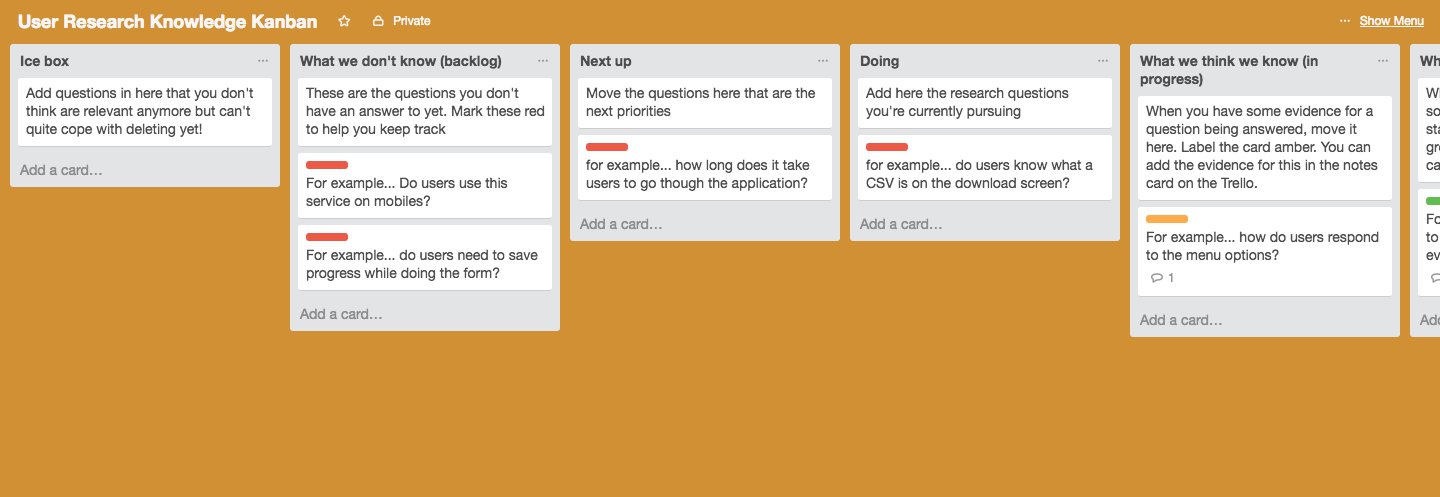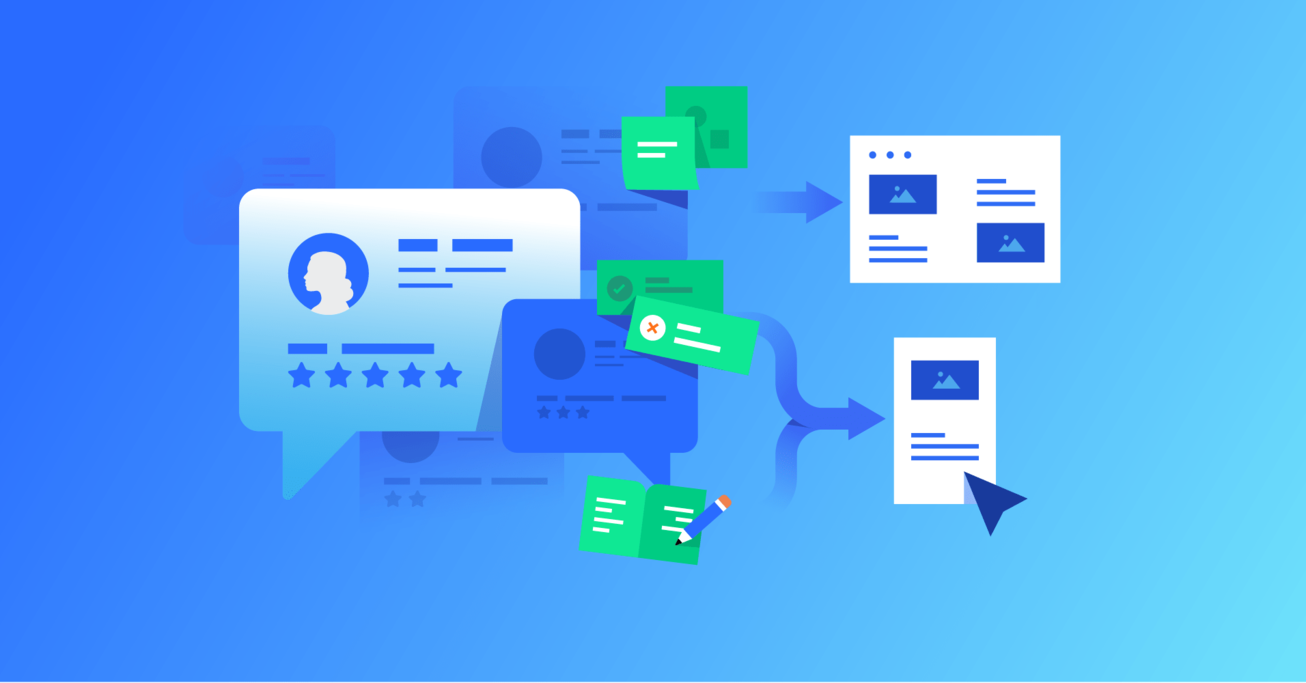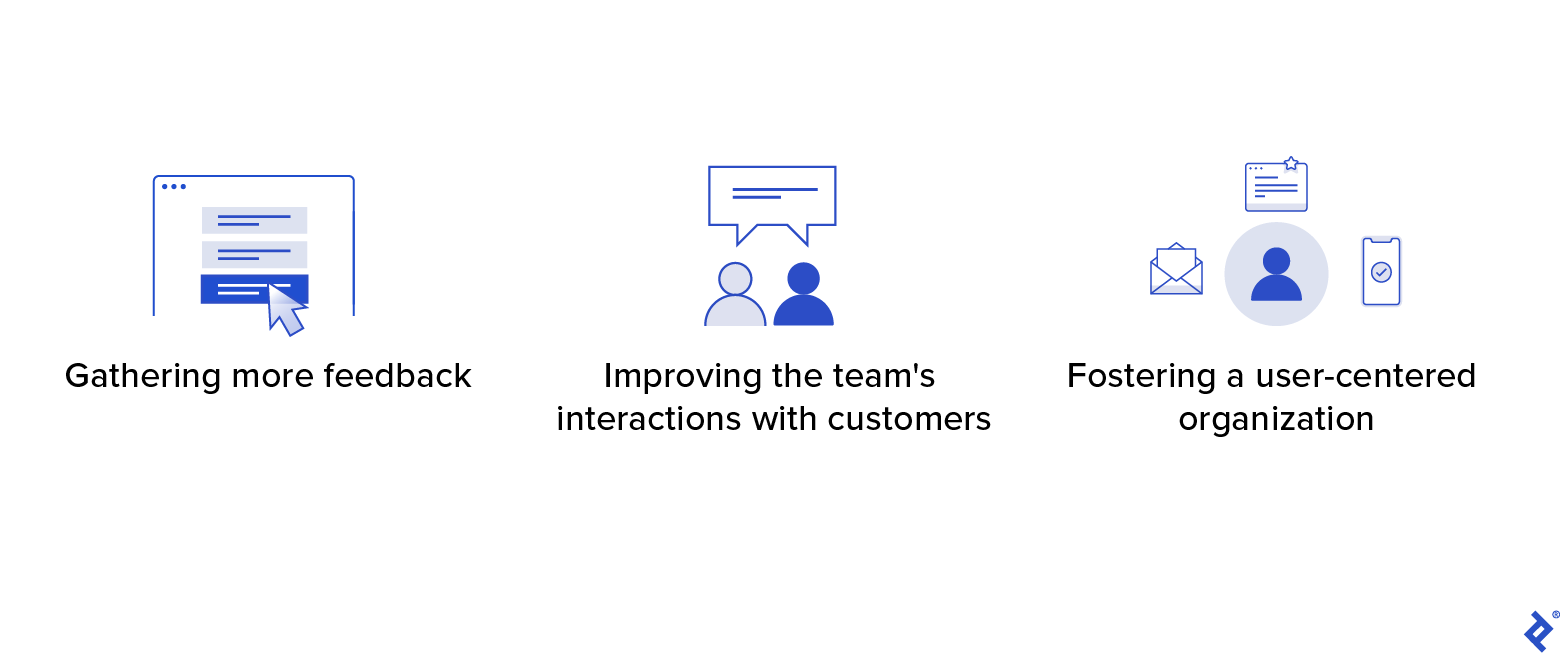Democratizing User Research to Innovate and Refine Digital Products
Empowering non-researchers to collect client feedback can pave the way to better products and customer retention.
Empowering non-researchers to collect client feedback can pave the way to better products and customer retention.
Mariia is a senior full-stack product designer specializing in healthtech and business operations. Her past clients include the Singapore Ministry of Health and Verizon. Working with a healthcare venture-building studio, she conducted foundational research and managed end-to-end design for multiple products.
Expertise
Previous Role
UI/UX DesignerPREVIOUSLY AT

Staying in tune with what users want means more loyal customers—and more revenue for companies. Seminal research by Fred Reichheld, creator of the all-important NPS score, found that a 5% increase in customer retention can lead to a 25% to 95% increase in profits. Keeping the customers you have is all the more important when you consider the cost of acquiring new ones: Sixty-one percent of retailers in one 2022 study cited rising customer acquisition costs as one of their greatest obstacles in meeting e-commerce goals. One of the best ways to keep the customers you already have? Make sure your product does what your users want it to.
User research, an essential part of the design process, is a powerful instrument for discovering users’ goals and the barriers to achieving them. Design teams regularly use these insights to improve UX. User insights are so crucial that research teams may get overloaded with requests they can’t realistically complete. But researchers aren’t the only ones who can gather useful client feedback: Companies like Miro, Google, Stripe, Slack, and Auth0 are democratizing research—training people in non-research roles to deploy user interviews and surveys to contribute to a company’s user research framework.
Democratizing research doesn’t mean forgoing a user research department. Instead, non-researchers should share insights with the research department to process raw data, filter and sort information, and deliver actionable conclusions—which designers leverage to innovate and improve products. And researchers should be instrumental in empowering teams with training and skills to systematically gather user feedback.
Benefits of Research Democratization
By involving more team members in research, companies can collect additional information about audiences (such as insights into neglected markets) and particular aspects of the product or service that research teams haven’t been able to explore. Data collected by trained non-researchers can create a comprehensive picture of a product’s user experience. This extra detail supports overall generative and evaluative research efforts.
A common concern about democratized research is that it won’t produce quality insights. But many teams already gather feedback without support from researchers. Eduardo Gómez Ruiz, who led the effort to democratize research at Miro, notes: “Conversations with users are already happening regardless of our investment to empower others and we, as expert researchers, can facilitate and guide that process.” Democratizing research also promotes a better understanding of research and its impact.
According to the four researchers who developed Stripe's democratized research model, equipping non-researchers to gather insights enabled their team to focus on high-impact projects such as audience segmentation by mental models. They have more capacity to dedicate to strategic priorities, which are set in collaboration with company leadership.
Another benefit of democratized research is that it leads to a more user-centered organization by reframing interactions with customers as opportunities to learn about their challenges and goals. Expanding participation in research may also spur internal conversations about innovative ideas that solve customer problems and create a shared understanding of the target user. As Tony Hsieh, who was CEO of Zappos for more than 20 years, once said, “Customer service shouldn't just be a department, it should be the entire company.”
How to Democratize User Research in an Organization
Research democratization requires collaboration between researchers and non-researchers. These three steps can prepare people from across the organization to support research efforts.
Identify Participants
Start by identifying teams that could incorporate user research activities into their day-to-day, such as customer success, product, and marketing. Support and marketing teams may already survey customers, and guidance from researchers can strengthen the quality and consistency of these practices. For example, customer service teams could learn to add mini customer discovery sessions to their regular support sessions. As a result, they get timely feedback from clients that the product team can use in their work.
Ideal trainees will have prior research experience or an interest in developing research skills. They should also be comfortable speaking with customers because one-on-one interviews can be mentally draining, and remote interviews pose unique communication challenges.
Trainees should also have time to dedicate to research activities. The commitment varies by project, but typically ranges from a few hours to 10 or more per week.
Provide Training and Resources
Developing research skills is feasible with basic training, resources, and ongoing support. Begin by offering introductory training that includes an overview of user research methods. It’s best to focus on activities trainees will use most, like usability testing techniques, such as video interviews or session recordings. At Thumbtack, researchers lead a two-hour workshop for non-researchers that covers research biases, moderating best practices, and how to work with the research team.
You can also invite trainees to shadow an experienced interviewer or view a sample interview so they can see techniques in practice. To go a step further, conduct mock interviews and pair each trainee with a coach who can provide more nuanced feedback on their performance. Thumbtack provides coaching for the research trainees who attend their workshops.
Avoid overloading trainees with excessive or lengthy training content. I recommend sharing quick guides, templates, and checklists that can be used repeatedly. It's also helpful to provide a central location to view and track research requests, such as a Trello board. This enables trainees to learn about typical research requests and gain insight into the research team's process.

Templates make research activities seamless for non-researchers and help ensure that all projects meet quality standards. For example, you could develop templates for inviting users to participate in research, keeping track of recruited users and documenting findings.
Lists also help non-researchers follow best practices and have positive interactions with users. For instance, you can supply a list of proven interview questions and interactive checklists for what to do before, during, and after an interview. Here again, Trello is an effective tool for storing these lists.

After providing trainees with the skills and resources needed to gather user feedback, set them up for continued success by offering ongoing support. Start a Slack channel where non-researchers can get help—or hold monthly meetings where they can ask questions or learn new methods. Finally, bring together non-researchers to share insights, best practices, and challenges to further facilitate learning and development.
Choose the Right Projects
Successfully democratizing research in an organization means choosing projects where non-researchers can build their skills and add value. Avoid tasks involving complex flows, calculations, or user research analysis. Non-researchers should be assigned activities that can be completed by following templates and lists. Stripe empowers non-researchers to conduct tactical research, such as survey design, and Thumbtack offers instruction on performing user interviews. These tasks don’t require extensive training and yield timely feedback from clients.
Also, consider how the company will use the knowledge non-researchers gather. Create a dedicated Slack channel to share research insights, or host the information in research repositories, making the feedback accessible to others across the organization. This research report template from Miro enables team members to document and disseminate findings to the broader organization.
Although trainees can perform tactical tasks, researchers should analyze, synthesize, and evaluate their findings. Additionally, larger innovations—like identifying long-term opportunities for the company and testing new concepts—require deep research expertise and alignment with business priorities. A highly skilled research team is best positioned to tackle these tasks.
Continuous Collaboration and Improvement
Involving the broader team in research activities is most effective when researchers train non-researchers to conduct specific, achievable tasks and provide ongoing support. This approach can be particularly advantageous for companies with small research teams. Regardless of a company’s size, empowering more team members to support user research goals cultivates a more user-centered culture and strengthens product innovation and improvement.
Understanding the basics
What is the purpose of user research?
The purpose of user research is to learn more about users’ goals in order to innovate and refine products to meet their needs. A key user research objective is to use customer feedback to improve products and create an excellent user experience.
What is the democratization of user research?
Democratizing research means training employees in non-research roles to gather client feedback. This approach enables organizations to gather insights to improve UX, and it also helps foster a user-centered culture.
When should user research be conducted?
User research can be conducted before building a product to find opportunities for innovation (generative research), or after it is built in order to improve it (evaluative research).
Tags
London, United Kingdom
Member since November 30, 2021
About the author
Mariia is a senior full-stack product designer specializing in healthtech and business operations. Her past clients include the Singapore Ministry of Health and Verizon. Working with a healthcare venture-building studio, she conducted foundational research and managed end-to-end design for multiple products.
Expertise
Previous Role
UI/UX DesignerPREVIOUSLY AT




